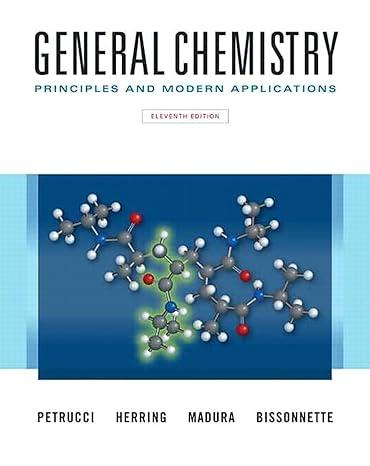(A) In Example 15-5, equal masses of CO, H 2 O, CO 2 , and H 2...
Question:
(A) In Example 15-5, equal masses of CO, H2O, CO2, and H2 are mixed at a temperature of about 1100 K. When equilibrium is established, which substance(s) will show an increase in quantity and which will show a decrease compared with the initial quantities?
(B) For the reaction PCl5(g) ⇌ PCl3(g) + Cl2(g), Kc = 0.0454 at 261 °C. If a vessel is filled with these gases such that the initial partial pressures are PPCl3 = 2.19 bar, PCl2 = 0.88 bar, PPCl5 = 19.7 bar, in which direction will a net change occur?
Example 15-5
To increase the yield of H2(g) in the water–gas reaction—the reaction of C(g) and H2O(g) to form CO(g) and H2(g)—a follow-up reaction called the “water–gas shift reaction” is generally used. In this reaction, some of the CO(g) of the water gas is replaced by H2(g).
![]()
Kc = 1.00 at about 1100 K. The following amounts of substances are brought together and allowed to react at this temperature: 1.00 mol CO, 1.00 mol H2O, 2.00 mol CO2 and 2.00 mol H2. Compared with their initial amounts, which of the substances will be present in a greater amount and which in a lesser amount when equilibrium is established?
Step by Step Answer:

General Chemistry Principles And Modern Applications
ISBN: 9780132931281
11th Edition
Authors: Ralph Petrucci, Jeffry Madura, F. Herring, Carey Bissonnette





